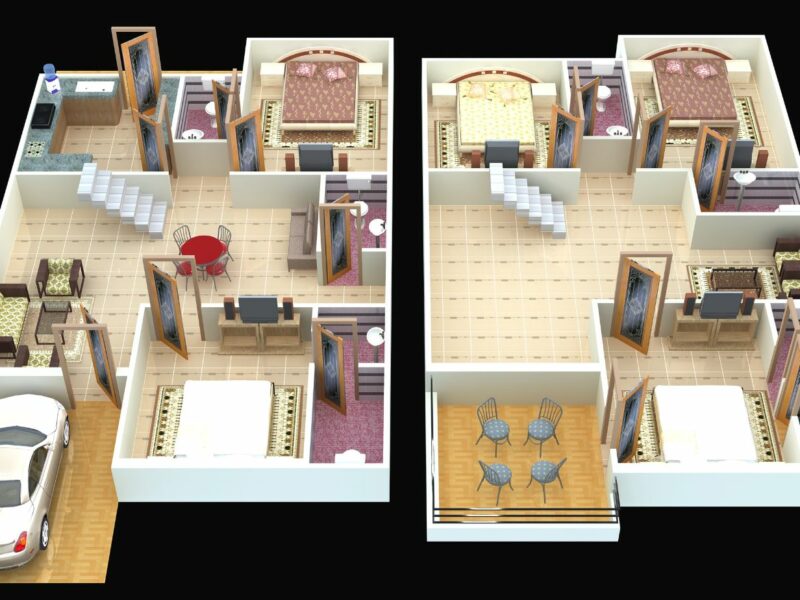3D rendering technology has seen a significant change in the architectural property development sector. With its unmatched visualization and design capabilities, which have expedited the development process and improved client communication, this ground-breaking technology has completely changed the game. Being a top supplier of technical support services, we have personally seen the significant influence that 3D rendering has had on the sector, and we are eager to share our observations with you.
The way designers, architects, and developers approach their projects has changed dramatically with the introduction of 3D rendering into the architectural property development process. This technology has become vital to contemporary real estate development because it offers unmatched visualization, design refinement, and client engagement capabilities.
In this blog article, we will discuss advanced approaches, examine the potential of 3D rendering, and discuss how it affects client engagement. We’ll also investigate how virtual reality (VR) and augmented reality (AR) may affect architectural property creation in the future.
The Power of 3D Rendering in Architectural Property Development
Visualizing Designs Before Construction
One of its main benefits is the capacity to see architectural plans in 3D before the building phase. With this technology, designers can produce realistic, detailed models of the intended property, which helps them spot any potential problems with the design and make the required corrections. Early detection of these problems allows developers and architectural companies to save money and resources while guaranteeing more effective and seamless project execution.
Enhancing Client Communication
Additionally, 3D rendering has changed how designers and architects interact with their clientele. A thorough, interactive understanding of the proposed design is given to clients through 3D renderings instead of static 2D drawings or sketches. Because clients can now see the finished product more clearly and give more thoughtful input, they can make better decisions due to this improved visualization. As a consequence, there is a collaborative process that enhances project outcomes and client satisfaction.
Advanced 3D Rendering Techniques
The methods and tools utilized in 3D rendering and architectural property development constantly change. Photorealistic rendering and interactive rendering, two methods that are revolutionizing how we perceive and visualize architectural ideas, are at the forefront of this evolution.
Photorealistic Rendering
One of the most astounding developments is the realistic results obtained with 3D rendering. Photorealistic rendering makes architectural ideas come to life using real-world lighting, textures, and details, accurately depicting the finished result. This degree of realism is priceless for clients because it helps them envision the property in a way that closely resembles the real thing.
Interactive Rendering
The emergence of interactive rendering in 3D rendering is another fascinating development. This technology allows viewers to examine a 3D object from several angles, creating a more exciting and immersive experience.

Clients can visually “walk through” the property with interactive rendering to better grasp the design’s layout and spatial linkages. Better decision-making is encouraged by this participatory strategy, which also improves the customer experience overall.
The Impact of 3D Rendering on Client Engagement
Client participation has significantly increased due to the architectural property development process incorporating 3D visualization. Realistic, interactive renderings of the proposed property help customers better understand the design and make better judgments.
Informed Decision-Making
Thanks to 3D rendering, clients are empowered to make better judgments about the layout of their property. Clients who can virtually experience the area can offer insightful criticism and recommend changes consistent with their vision. By working together, we can guarantee that the finished product meets the client’s expectations and lower the possibility of expensive revisions or construction delays.
Increased Client Satisfaction
Client satisfaction has increased dramatically due to 3D rendering’s improved visualization and engagement. Clients feel more connected and interested in the design process because they can better comprehend the proposed property and offer insightful feedback. Due to this sense of ownership and collaboration, the client will eventually have a better experience and a stronger working connection with the architectural company or developer.
The Future of Architectural Property Development with 3D Rendering
3D rendering will become more significant in design and planning as the architectural property development sector develops. Emerging technologies like virtual reality (VR) and augmented reality (AR) will enhance 3D renderings, providing immersive experiences that were unthinkable only a few years ago.
Virtual Reality (VR)
With virtual reality (VR) technology, clients may virtually “walk through” their proposed property, offering a previously unheard-of level of involvement and comprehension. By donning a VR headset, clients can explore the room in a completely immersive setting, which helps them understand the design and its spatial relationships on a deeper level.

In addition to improving the customer experience, this technology allows developers and architects to recognize problems early on and take more efficient measures to resolve them.
Augmented Reality (AR)
Contrarily, augmented reality combines the digital and real-world realms to enable clients to see the proposed home in their current surroundings. Clients may use this technology to visualize how the new development will blend in with the surrounding area, which helps them make better judgments regarding the overall design and how it will affect the local environment.
Conclusion
The architectural property development sector has experienced a revolutionary shift with 3D rendering. This cutting-edge technology, which offers unmatched visualization, design refinement, and client engagement capabilities, has completely changed how developers, architects, and designers approach their projects. The future of architectural property development appears more promising than ever as the sector continues to develop and adopt technologies like virtual reality and augmented reality.
With advanced 3D rendering services, you may realize the full potential of your architectural property development projects. Experience the potential of modern visualization tools to realize your vision, improve client involvement, and expedite the design process.
Contact us now to learn more about our 3D rendering services and how we can help you accomplish your objectives and transform your initiatives.










